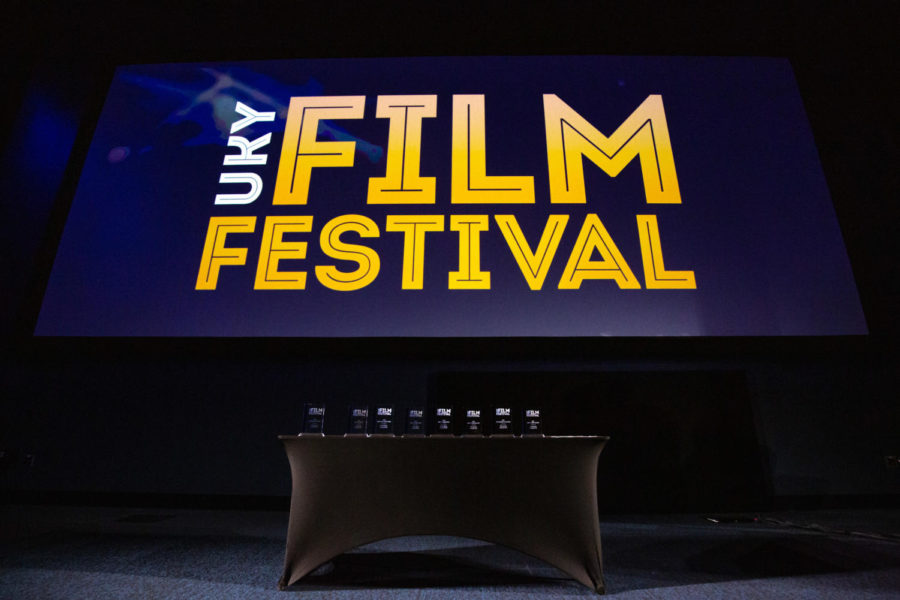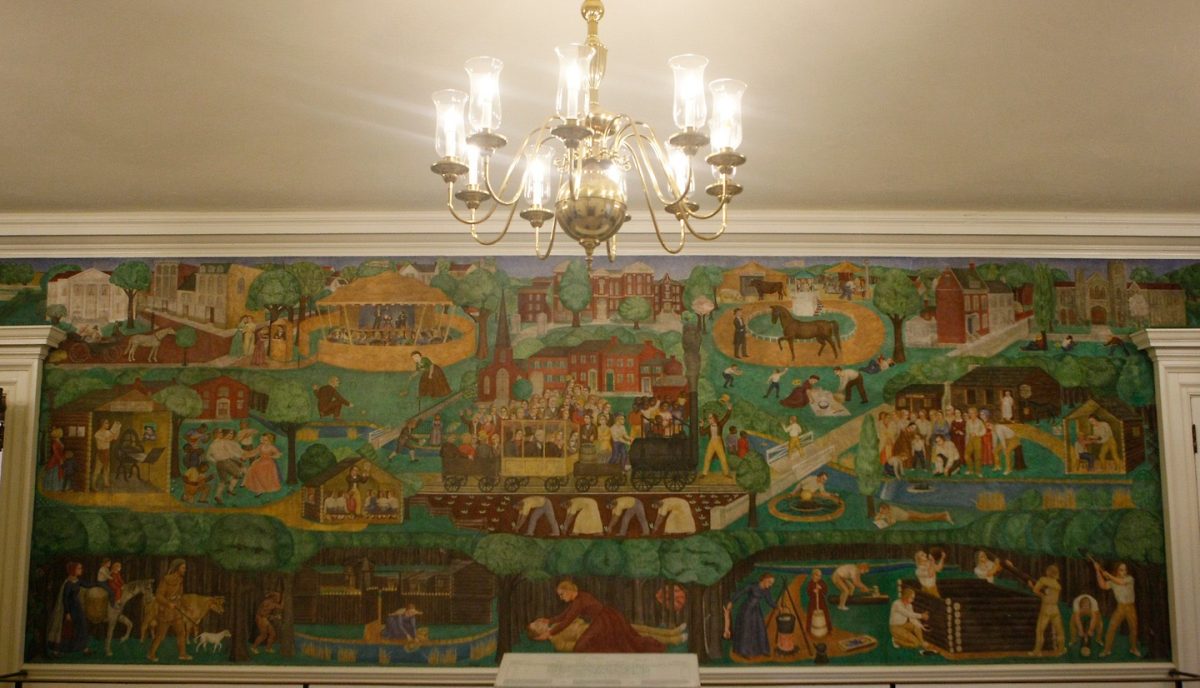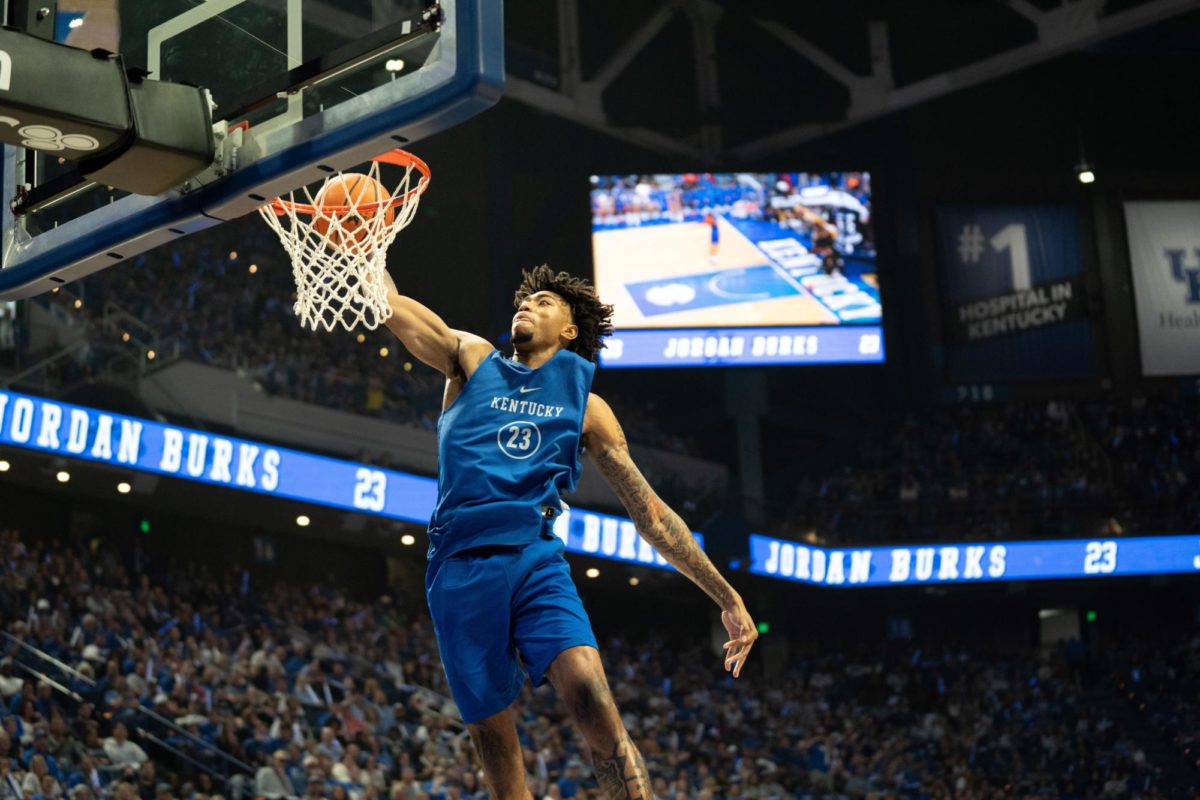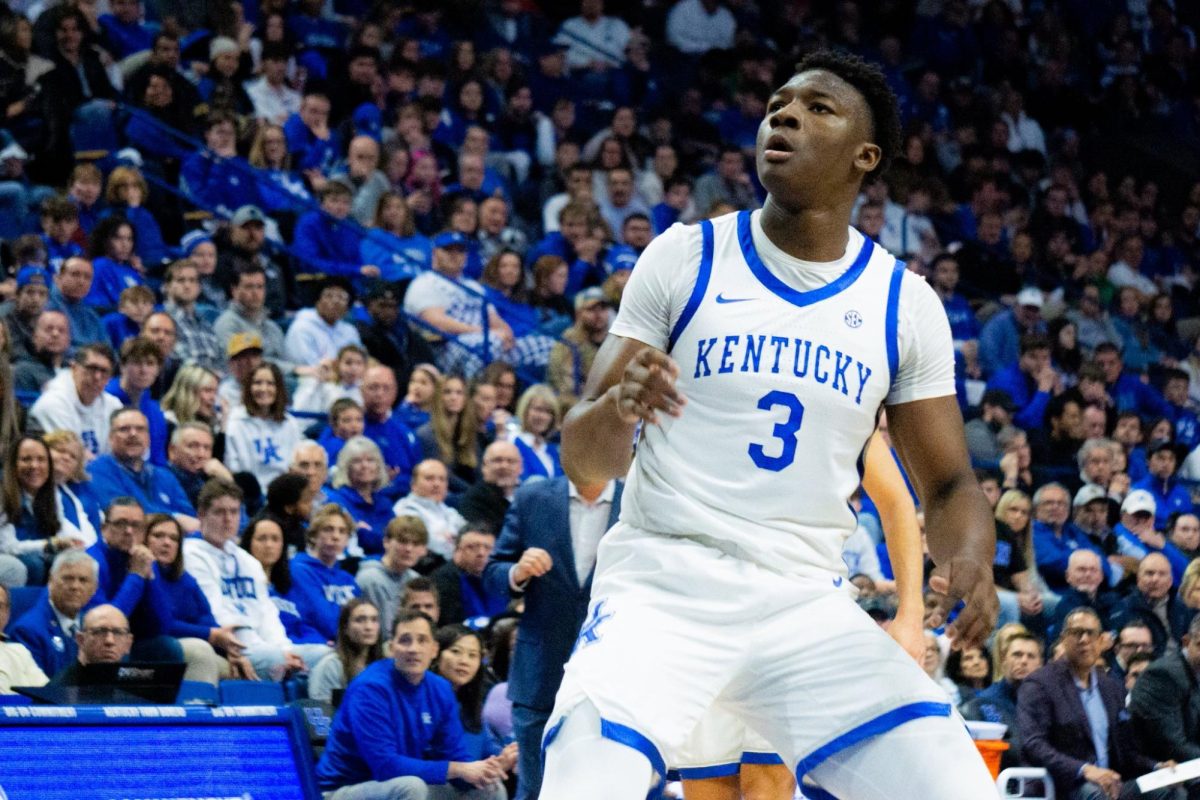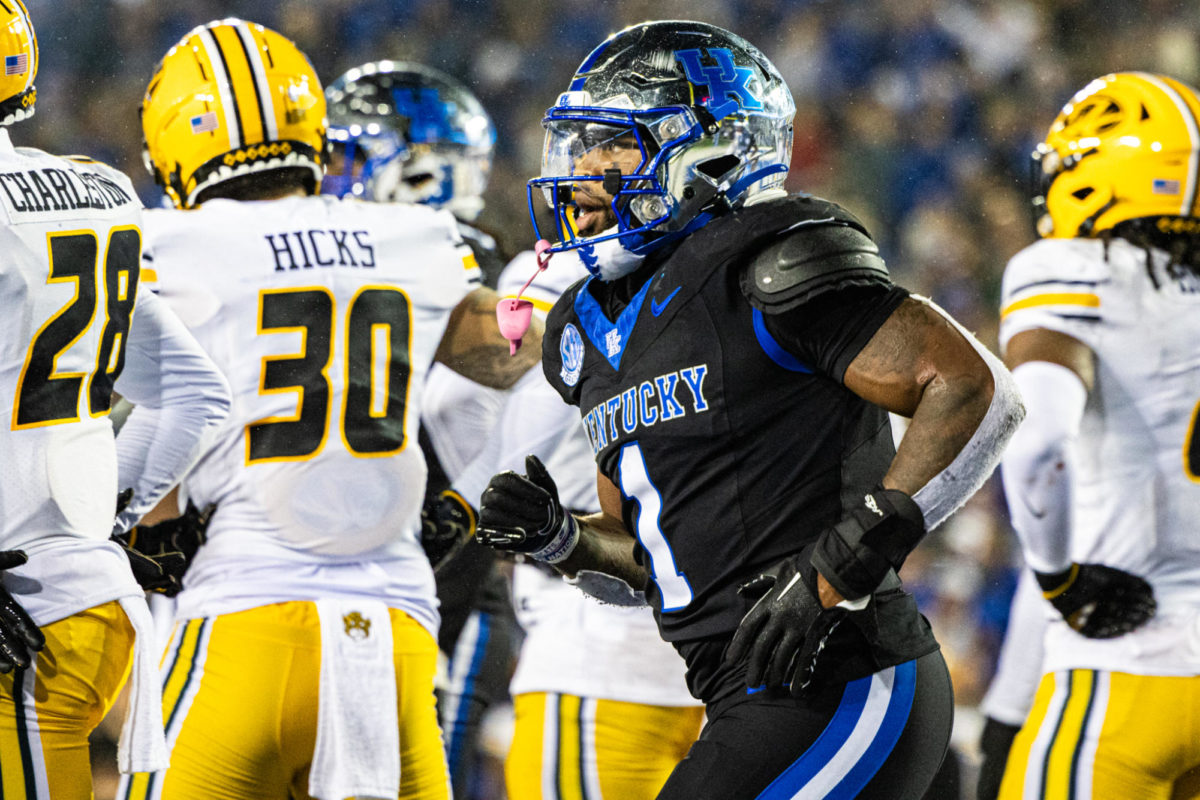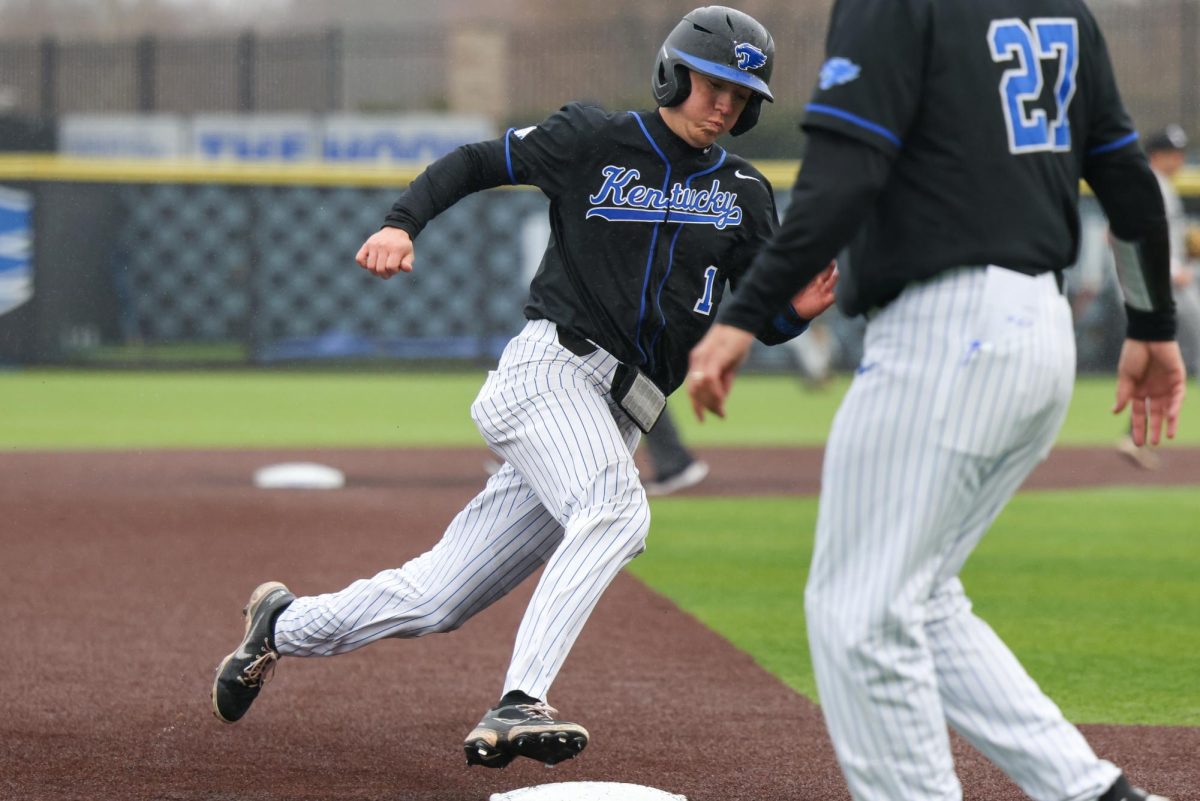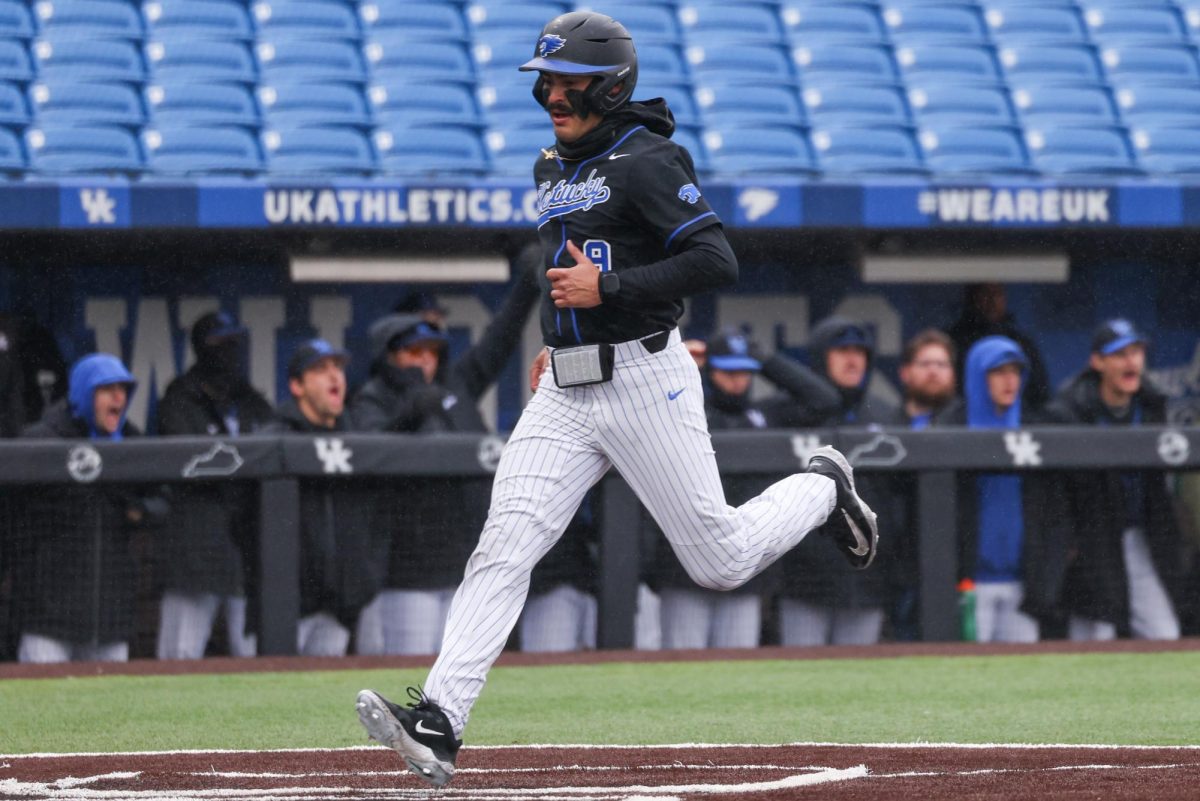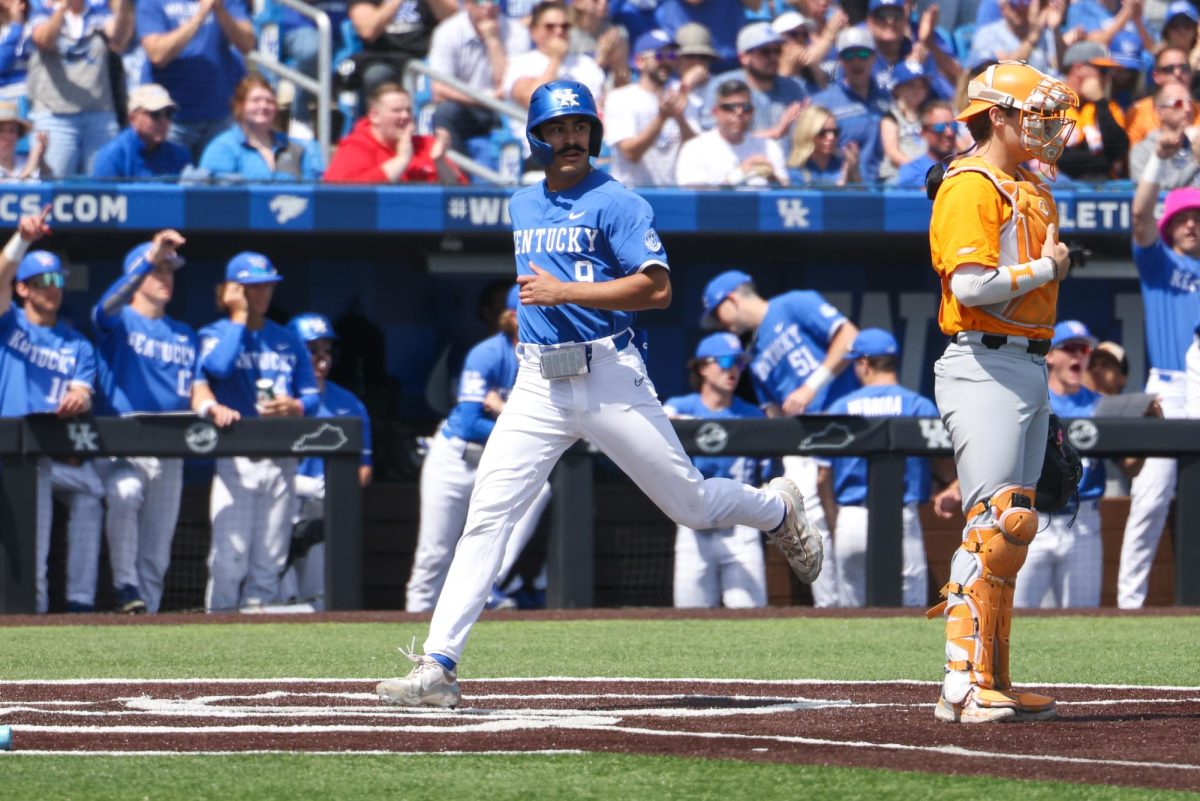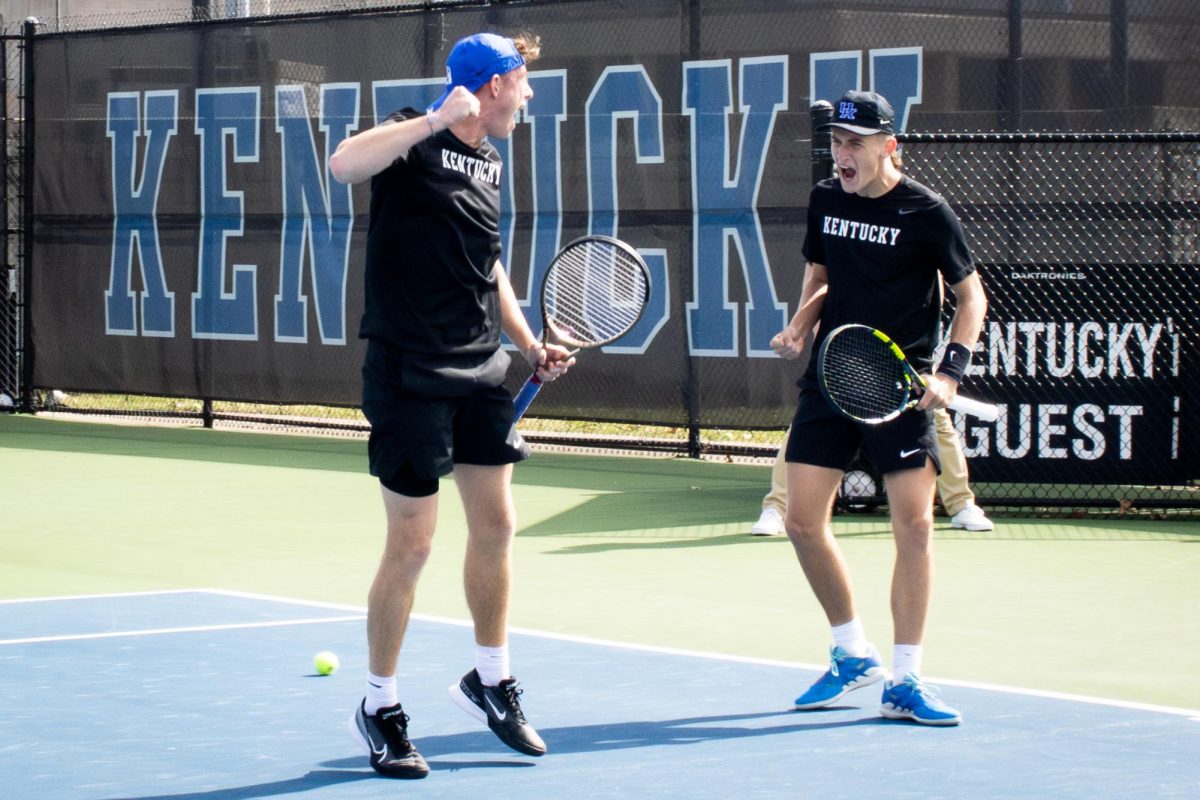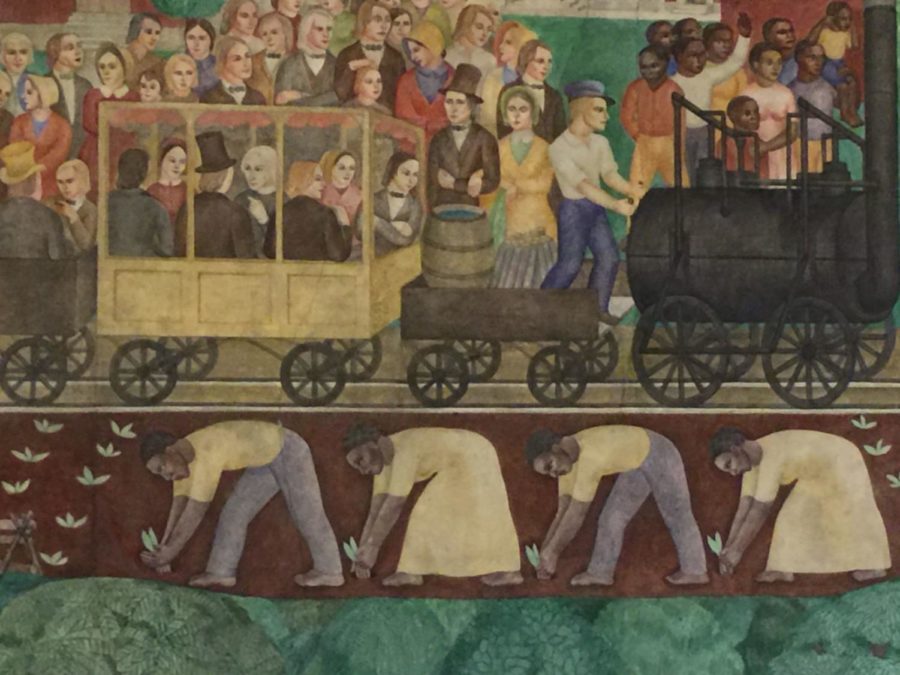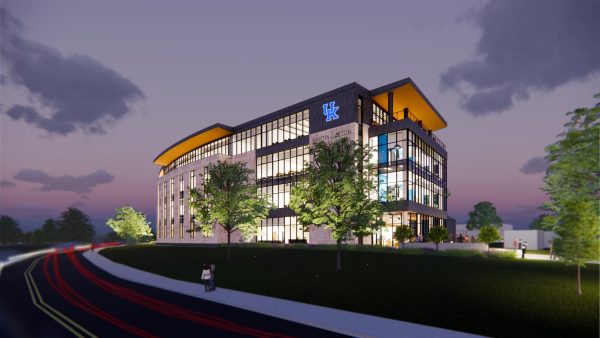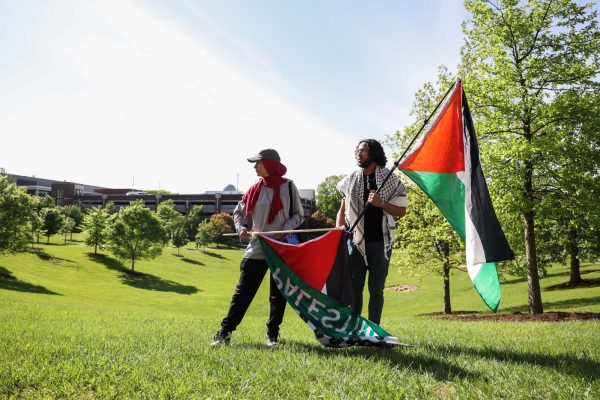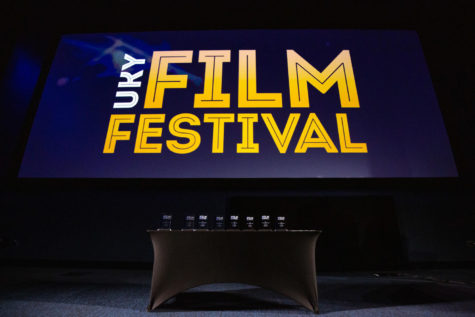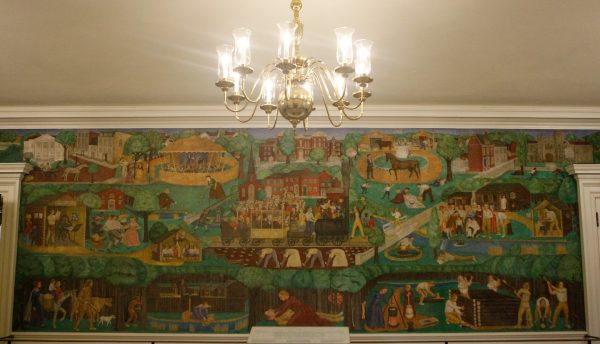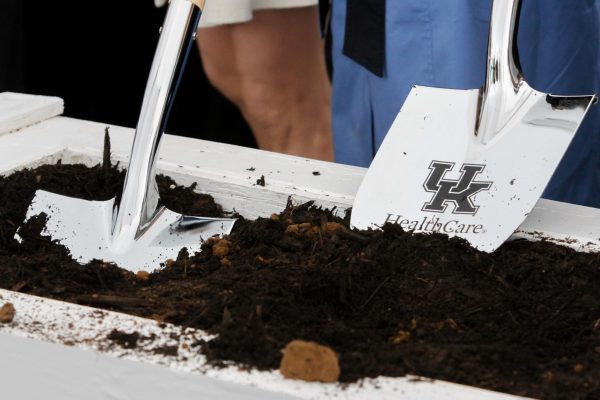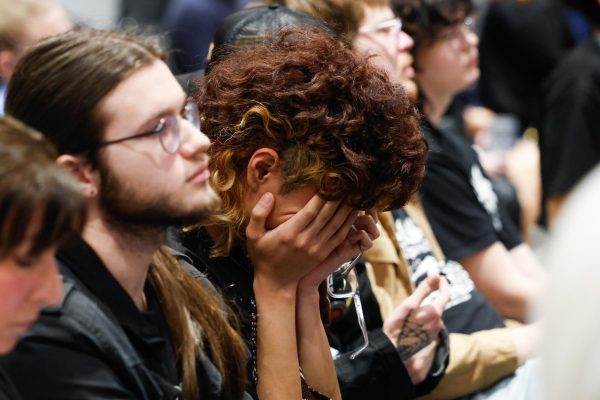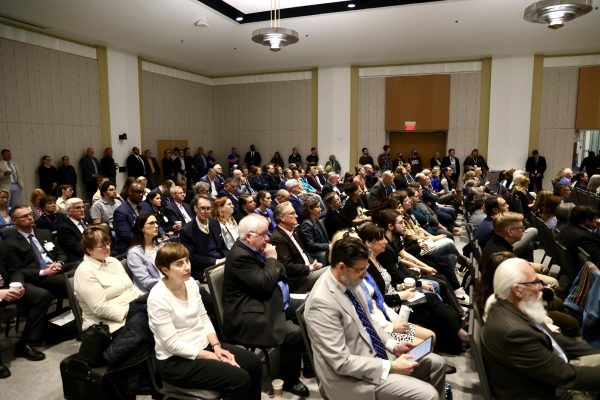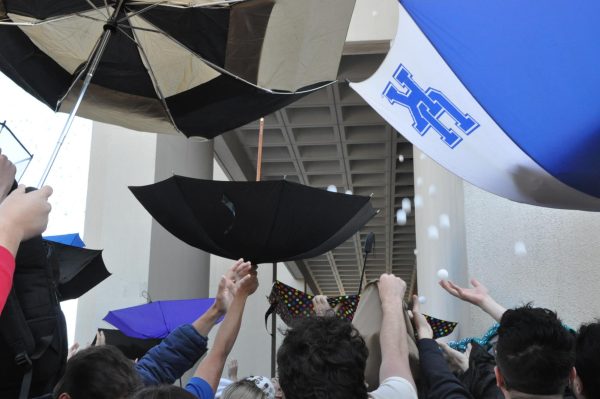Future uncertain for Memorial Hall’s controversial mural
November 24, 2015
// <![CDATA[</p><p>_psEmbed(“http://kykernel.photoshelter.com”);</p><p>// ]]>
By Alexandria Kerns
Controversy and debate has surrounded President Eli Capilouto’s recent announcement that UK will cover up the mural in Memorial Hall for its depictions of slavery.
Minority student leaders met with Capilouto at his Rose Street home Nov. 12. One of the items on the agenda was Ann Rice O’Hanlon’s large fresco mural in Memorial Hall’s lobby.
The mural was commissioned for the New Deal’s Public Works of Art Project and completed in 1934. Capilouto announced in a blog post Monday morning that it would be temporarily concealed until the university decides what to do with it.
“Many believe the art romanticized that time, maybe unintentionally, and in today’s world it is viewed differently,” said Capilouto, who also said preserving the mural is important.
The university will likely cover the mural this week, but Capilouto said he is unsure about what materials will be used to cover it. There will later be a message explaining why the university chose to cover it.
“If it offends people, it needs to go away,” said Chris Ledford, a Ph.D. candidate in political science.
Senators of UK’s Student Government Association attempted to have the mural removed in 2006, but former university president Lee Todd disagreed with the senators, saying the mural was a historical artifact and should remain.
The mural is one of the few true fresco pieces located in the U.S, according to the O’Hanlon Center for the Arts. The mural shows representations of Kentucky’s history, including slaves workers as farmers, black men playing music for white people, men training horses, and a Native American man carrying a tomahawk.
“We understand that many of the images depicted within the fresco have now become painful reminders of an era that some might prefer to erase from our shared past,” members of the O’Hanlon Center for the Arts said in a written statement. “Our greatest hope would be that this artwork might somehow become part of a pathway to deeper healing.”
The SGA may soon propose a resolution supporting the removal of the mural.
“It’s not about erasing history or erasing the past,” said Jacob Ewing, SGA director of inclusion and outreach. “(UK is) meant to be representative of the Commonwealth. It’s important that we’re providing that to every member of our state, not just certain populations.”
Many students have told SGA members about how the mural is painful to African-Americans on campus.
SGA President Austin Mullen said the mural will likely not be able to be moved because it is painted directly on the wall. Many students would rather have UK move the mural to a museum, but that may be impossible, he said.
Biology senior Jordan Wolfe said though the mural portrays racism, the university should handle the situation differently than covering it.
“You can’t erase things because they aren’t your beliefs,” Wolfe said. “This creates a slippery slope.”
Though the mural was discussed at the meeting with Capilouto, National Association of Black Journalists UK chapter vice president Kaelin Massey said it was not one of the main topics to be addressed.
“Art is taken by those who view it, but it depicts something that people don’t like to talk about,” Massey said.
Ken Paulson, president of the First Amendment Center, said symbols depicting slavery and racism have caused controversy for decades. The Confederate flag, for example, has long been debated, especially when it flies on state property.
“They discuss it, they debate it, and in this case the university may well take it down. That’s how the marketplace of ideas works,” he said. “No one’s rights are being violated if you take it down.”




